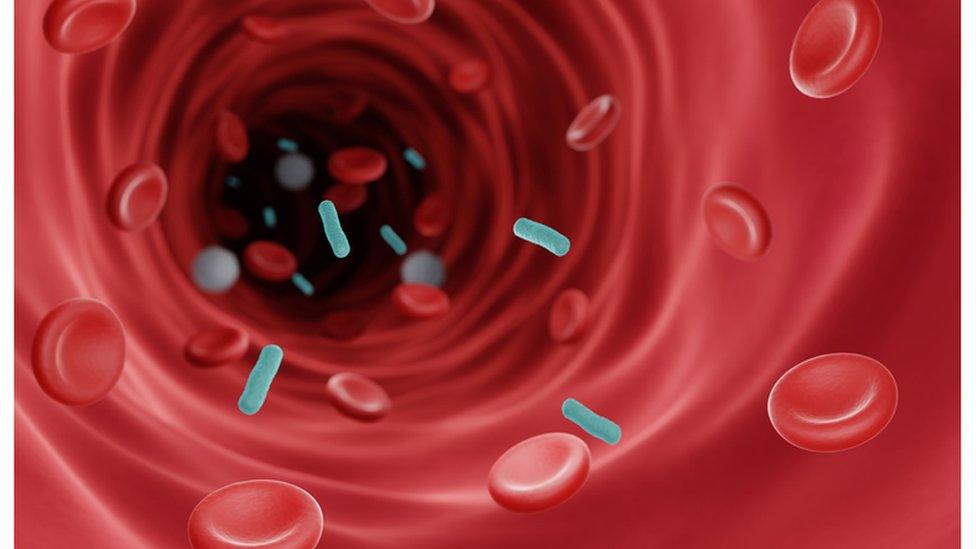World Sepsis Day: What is sepsis? What are the symptoms?
- Published
- comments

Today - Wednesday 13 September - marks World Sepsis Day.
Sepsis is a rare but serious medical condition which occurs when the body's immune system - which is meant to fight against disease and infection - starts to attack the body's own tissues and organs.
World Sepsis Day is an important day, with events being held around the world to raise awareness of the condition.
Read on to find out more about it.
What is sepsis?
Sepsis is a rare but serious medical condition which occurs when the body's immune system - which is meant to fight against disease and infection - starts to attack the body's own tissues and organs.
The NHS explains: "Sepsis can be triggered by an infection in any part of the body. The most common sites of infection leading to sepsis are the lungs, urinary tract, tummy (abdomen) and pelvis."
Sepsis is sometimes called septicaemia or blood poisoning.
It can be difficult to diagnose as the symptoms can at first appear to be flu, gastroenteritis or a chest infection.
They may take the form of unusual breathing, a physical rash or a change in skin's appearance (for example, it is blotchy or paler).
The fact that sepsis can be difficult to spot is a problem because it's really important to do it as early as possible so that the patient can receive treatment in hospital and start taking antibiotics straight away to treat it.
You cannot catch sepsis from someone else.
How is sepsis diagnosed?
Sepsis is often diagnosed using basic measurements such as temperature, heart rate and breathing rate, as well as a blood or blood pressure test.
In February 2019, it was announced that a new test for quicker diagnosis of sepsis had been developed by researchers at the University of Strathclyde.
This was important news as the condition is not always easy to detect.
The device used in the new low-cost test examines the patient's blood and is able to give a result in 2.5 minutes.
A close-up of the new test device
At the moment, it can be tricky to diagnose the condition, but the test would enable doctors and nurses to quickly test for the condition themselves - at a patient's bedside in hospital, in A&E departments or at doctors' surgeries, for example.
The device tests the blood to see if a protein called interleukin-6 (IL-6) is present.
Dr Damion Corrigan, who was part of the team that developed the test, said that IL-6 is one of the best markers of the condition.
It can quickly diagnose the condition and, should this be positive, recommend the right antibiotic for patients to take.
- Published20 October 2021
- Published28 September 2022
- Published13 September 2019
